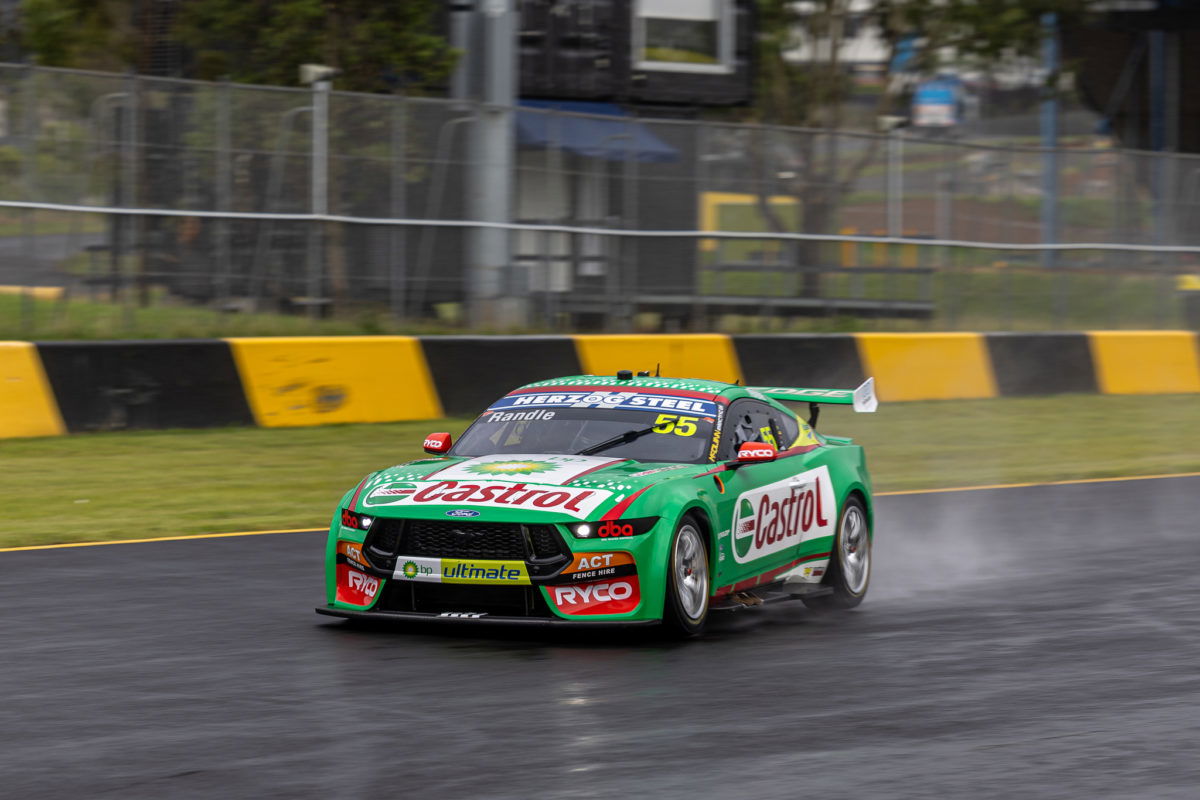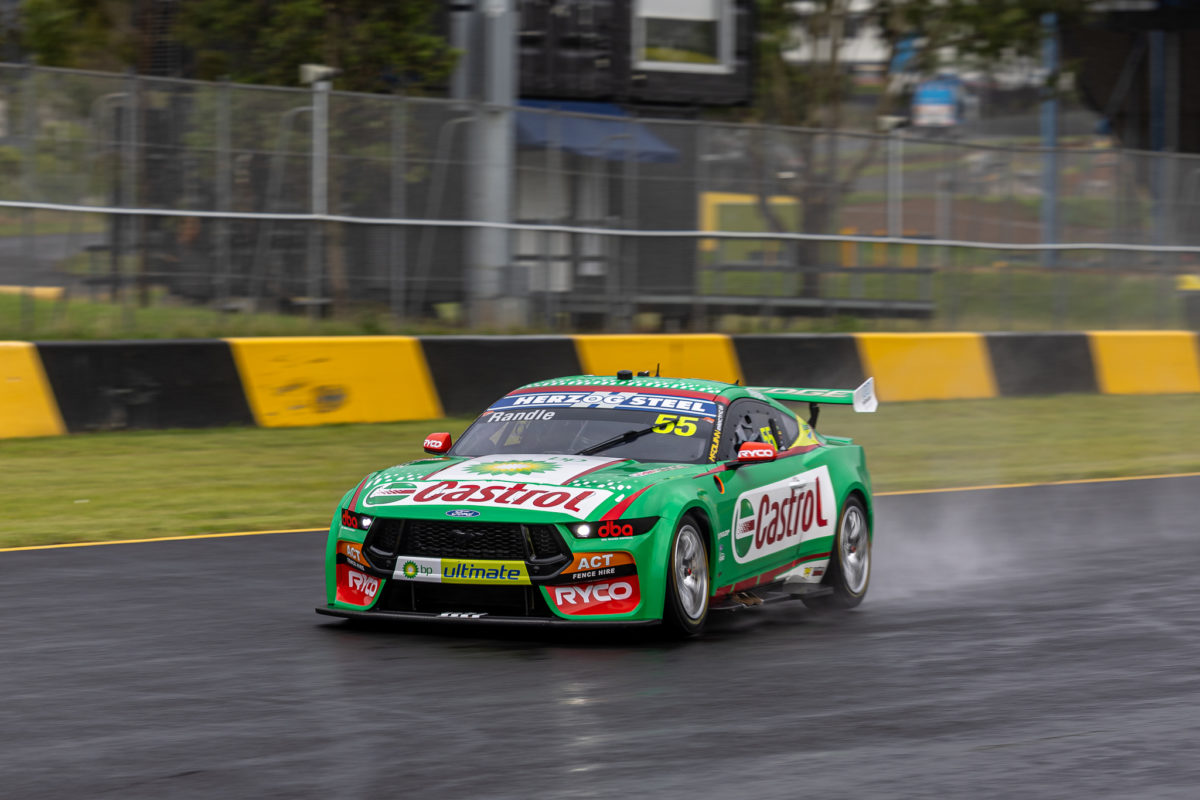

A Supercars-initiated engine calibration change on the night before the official pre-season test led to a spate of throttle problems for Ford teams, Speedcafe.com has learnt.
The #55 Tickford Racing Ford Mustang completed only 10 laps in the four-hour morning session at Sydney Motorsport Park, with Team Principal Tim Edwards reporting that Thomas Randle was “struggling with the throttle feel”.
However, Speedcafe.com has learnt that throttle problems were also experienced at fellow Ford teams Grove Racing and Walkinshaw Andretti United at least.
Now, it has emerged that Supercars staff decided to make a mapping change to the Gen3 Mustangs on the night before the test, and is thought to have produced the litany of dramas for the Mustangs.
Importantly, those problems had not been experienced during shakedowns.
For both Chevrolet and Ford teams, shakedown days of around 100 laps per car became commonplace, in stark contrast to the gremlins in Car #55.
However, Speedcafe.com understands that, after multiple hours spent trying to diagnose the problem in that car, an older map was loaded which fixed the issue.
Notably, Car #55 would complete 52 laps in the afternoon session, matching the sister #6 Mustang and all but matching the sister #56 Mustang (53 laps).
For reference the Camaro with the most mileage in the afternoon was the #14 Brad Jones Racing entry of Bryce Fullwood, which also logged 52 laps.
The Camaro was not spared changes within its powertrain either, with the shift cut elongated.
The changes come after Supercars put cars on a hub dyno last Friday, plans for which were first reported by Speedcafe.com last week.
Gear shifting had been a bone of contention within the Ford camp, hence the dyno work, and presumably hence the change to the cut in the Camaro.
It hardly seemed to slow the Chevrolets down, but the Mustangs were not only dealing with a new engine map, but are also claimed to have been running about 60kg heavier given Supercars still has not mandated a minimum weight, and given also that the Coyote engine is heavier than the pushrod General Motors unit.
Both Triple Eight Race Engineering’s Mark Dutton and Brad Jones himself (Brad Jones Racing) have suggested there was also an element of gamesmanship among their Ford rivals, in so much that few used new super soft tyres.
However, on engines, specifically, sources within Supercars claim that the Engine Power Weighted Average (EPWA) is the same between both the Mustang and Camaro units.
The parity debate exploded in Sydney after Camaros locked out the top eight and filled up 11 of the top 12 positions in both the afternoon session and on combined times.
Hours after the test had wrapped up, Supercars confirmed that it is conducting “additional straight line evaluations” next week.
It stopped short of referring to the activity as VCAT, although it is consistent with the VCAT process which must be undertaken to homologate new body shapes.
The contention in the Ford camp is that, while total downforce is equal from Mustang to Camaro, the former has too much at the front and hence less at the rear.
The latest developments come barely more than a fortnight before the season starts with the Thrifty Newcastle 500 on March 10-12.




















Discussion about this post